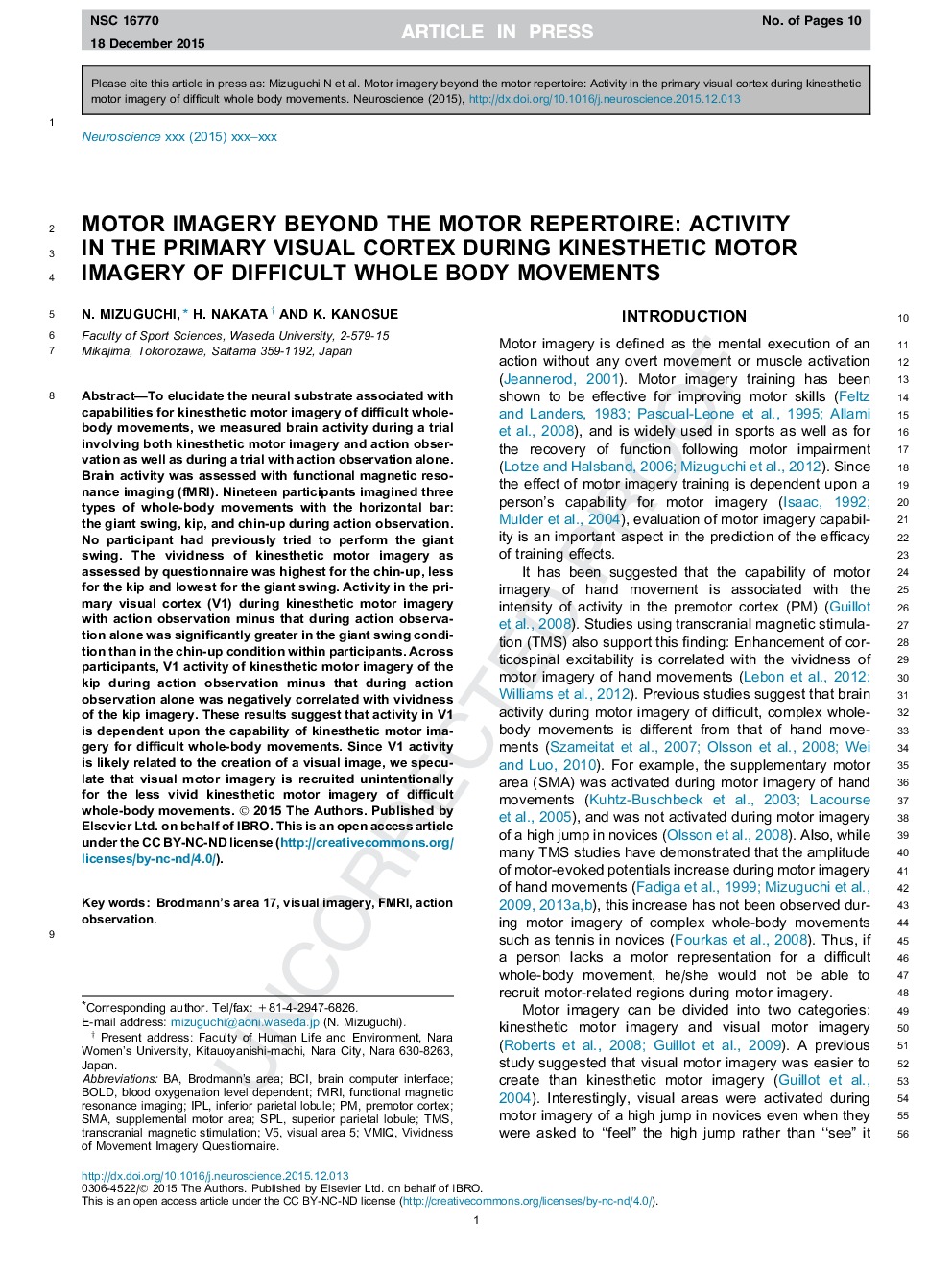| Article ID | Journal | Published Year | Pages | File Type |
|---|---|---|---|---|
| 6271713 | Neuroscience | 2016 | 10 Pages |
Abstract
To elucidate the neural substrate associated with capabilities for kinesthetic motor imagery of difficult whole-body movements, we measured brain activity during a trial involving both kinesthetic motor imagery and action observation as well as during a trial with action observation alone. Brain activity was assessed with functional magnetic resonance imaging (fMRI). Nineteen participants imagined three types of whole-body movements with the horizontal bar: the giant swing, kip, and chin-up during action observation. No participant had previously tried to perform the giant swing. The vividness of kinesthetic motor imagery as assessed by questionnaire was highest for the chin-up, less for the kip and lowest for the giant swing. Activity in the primary visual cortex (V1) during kinesthetic motor imagery with action observation minus that during action observation alone was significantly greater in the giant swing condition than in the chin-up condition within participants. Across participants, V1 activity of kinesthetic motor imagery of the kip during action observation minus that during action observation alone was negatively correlated with vividness of the kip imagery. These results suggest that activity in V1 is dependent upon the capability of kinesthetic motor imagery for difficult whole-body movements. Since V1 activity is likely related to the creation of a visual image, we speculate that visual motor imagery is recruited unintentionally for the less vivid kinesthetic motor imagery of difficult whole-body movements.
Keywords
Related Topics
Life Sciences
Neuroscience
Neuroscience (General)
Authors
N. Mizuguchi, H. Nakata, K. Kanosue,
